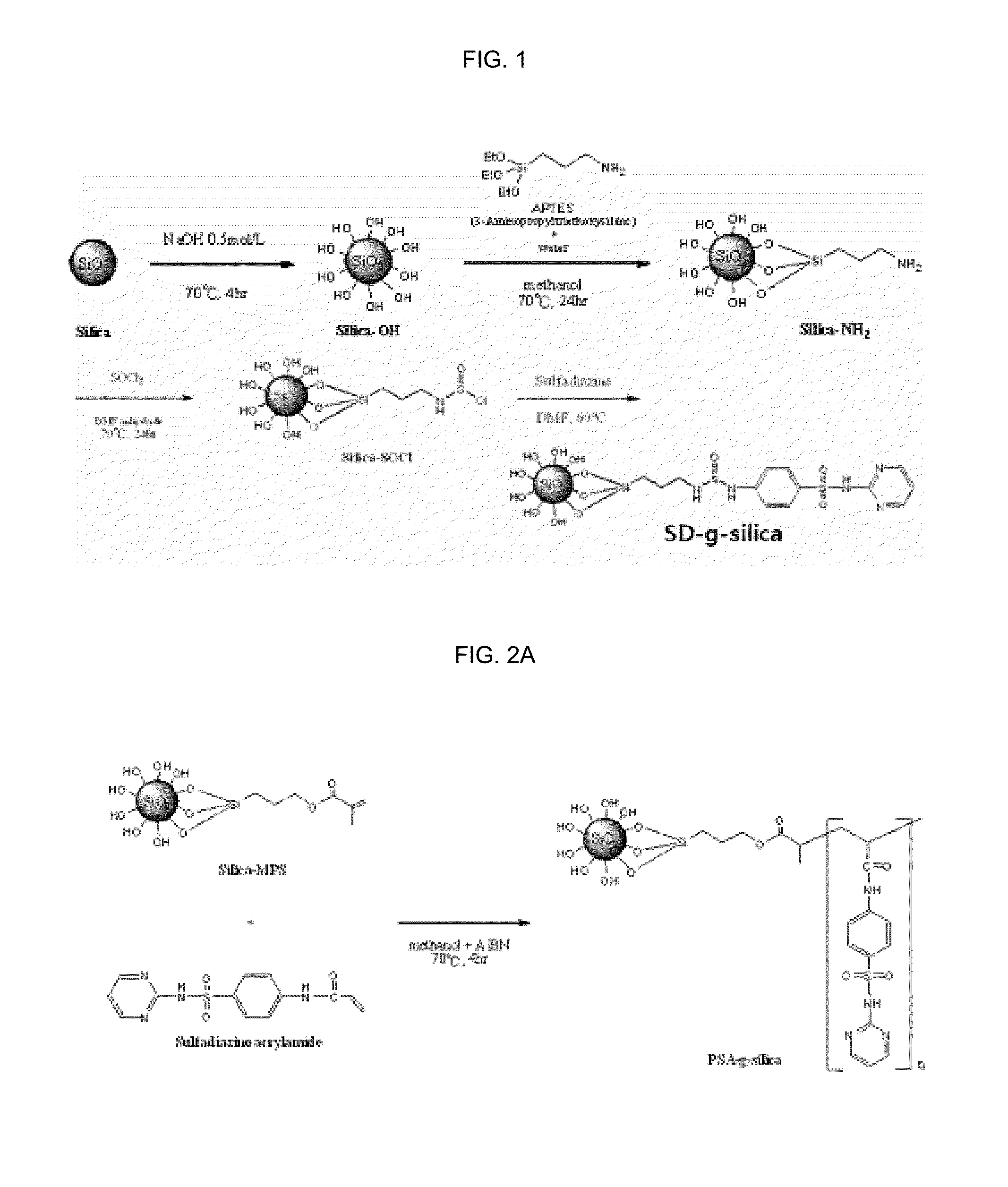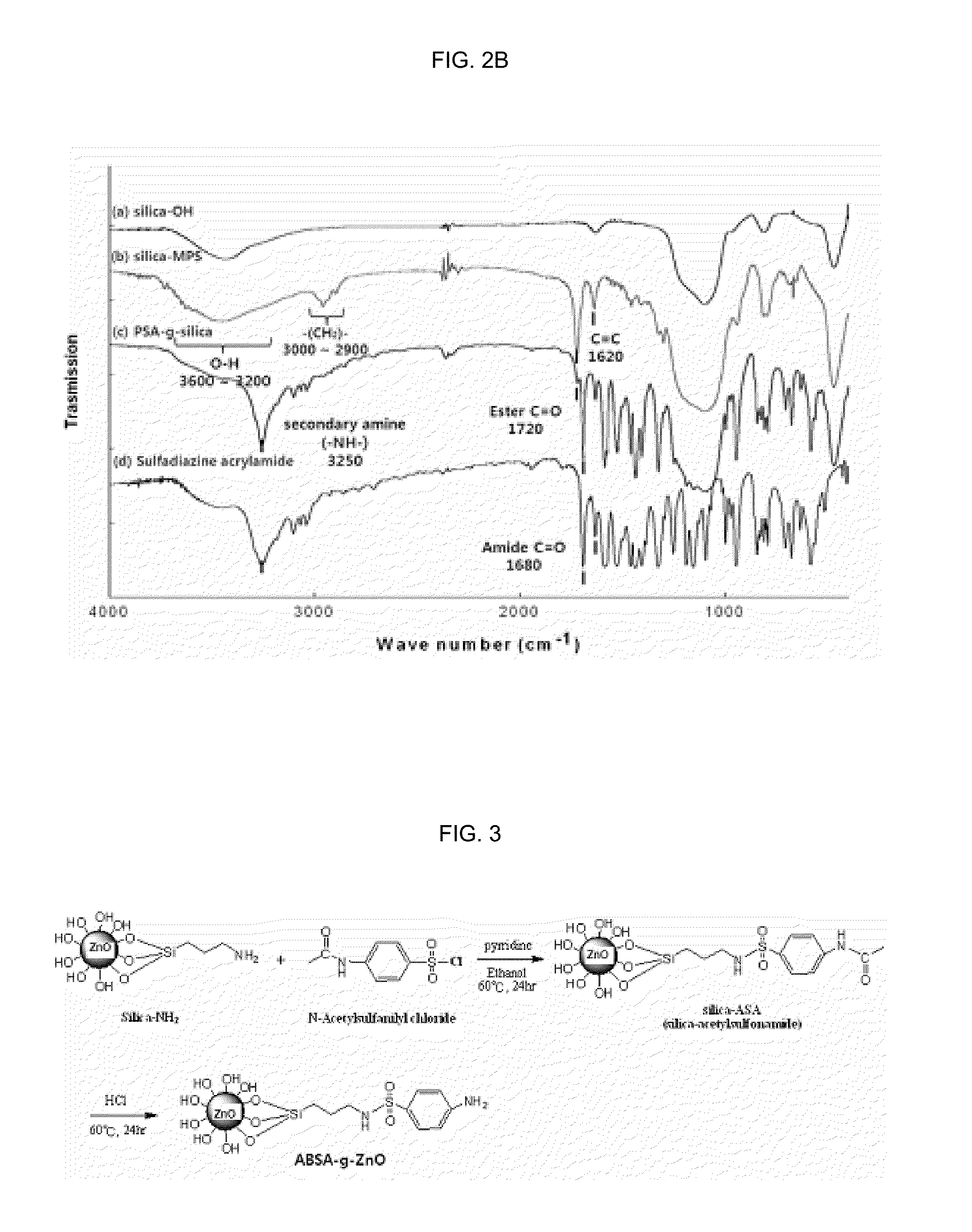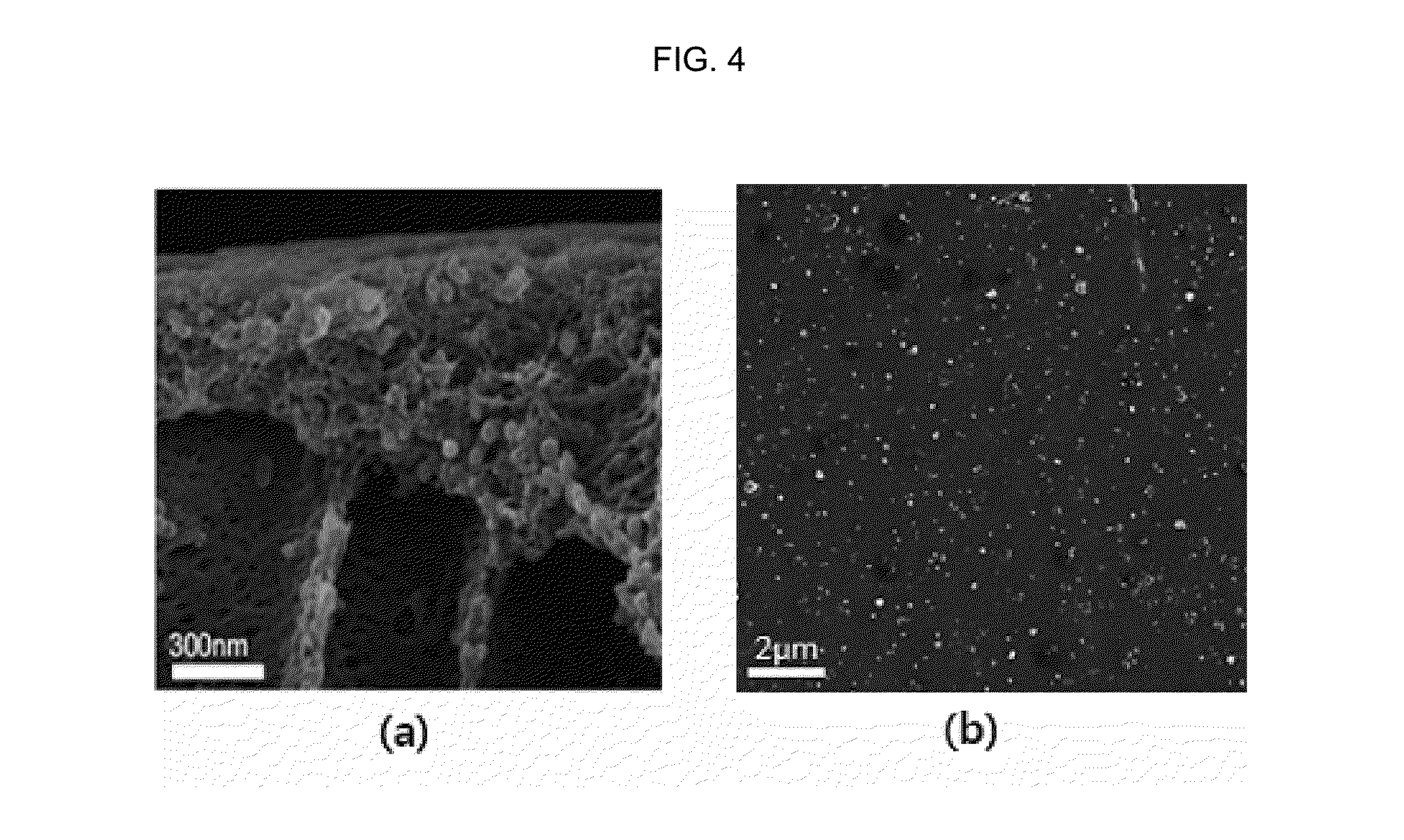Membranes having antibiotic and hydrophilic properties and preparation method thereof
a technology of membranes and hydrophilic properties, applied in the field of membranes with antibiotic and hydrophilic properties for water treatment, can solve the problems of water permeability and stain resistance characteristics, water permeability, rejection rate, and mechanical strength are gradually reduced, and achieve excellent mechanical strength, maintain antimicrobial properties, and high water permeability.
- Summary
- Abstract
- Description
- Claims
- Application Information
AI Technical Summary
Benefits of technology
Problems solved by technology
Method used
Image
Examples
example 1
Preparation of Silica Nanoparticles Grafted with Sulfadiazine (SD-g-Silica)
[0045]Silica nanoparticles grafted with an antimicrobial organic compound sulfadiazine (SD) were prepared through a reaction including the following four steps.
[0046](1) Silica nanoparticles (1 g) having a size of 40 nm were dispersed in an aqueous NaOH solution (100 ml) having a concentration of 1 mole, and the resulting mixture was reacted for 1 hour to form a hydroxyl group on the surface of the particles.
[0047](2) In order to form an amine group on the surface of the silica nanoparticles to which the hydroxyl groups collected through centrifugation and drying were chemically bonded, silica nanoparticles were dispersed in water (100 ml), and then 3-aminopropyltriethoxysilane (1 g) was put thereinto, and the resulting mixture was reacted at 70° C. for 24 hours to prepare silica nanoparticles grafted with 3-aminopropyltriethoxysilane.
[0048](3) In order to induce a reaction between an amine group present as a...
example 2
Preparation of Silica Nanoparticles Grafted with Poly Sulfadiazine Acrylamide (PSA-g-Silica)
[0050](1) Silica nanoparticles (5 g) having a size of 40 nm were dispersed in an aqueous NaOH solution (100 ml) having a concentration of 1 mole, and the resulting mixture was reacted for 1 hour to form a hydroxyl group on the surface of the particles.
[0051](2) In order to form a vinyl group on the surface of the silica nanoparticles, γ-methacryloxypropyltrimethoxysilane (γ-MPS, 1 g) was added to methanol (200 ml), water (180 ml), and a catalyst NH4OH (0.5 mol), and then silica particles having a size of 40 nm (10 g) to which a hydroxyl group was bonded were added thereto, and the resulting mixture was put into an oil bath controlled to a temperature of 30° C. and reacted for 2 hours to prepare silica nanoparticles grafted with γ-MPS.
[0052](3) In order to prepare silica nanoparticles grafted with an antimicrobial organic compound poly sulfadiazine acrylamide (PSA-g-silica), 1 g of silica nano...
example 3
Preparation of Silica Nanoparticles Grafted with Aminobenzene Sulfonamide (ABSA-g-Silica)
[0053]N-acetylsulfanilyl chloride (1.5 g) was put into ethanol (100 ml) and dissolved through stirring, and then 1 g of silica nanoparticles grafted with 3-aminopropyltriethoxysilane, which had been prepared in Example 1, were added thereto to disperse the mixture. 3 ml of pyridine was put thereinto, and then the mixture was reacted at 60° C. for 24 hours to prepare silica nanoparticles grafted with acetylsulfonamide. The thus prepared silica nanoparticles grafted with acetylsulfonamide were treated with a 10% hydrochloric acid aqueous solution to reduce the methyl amide of the end group into an amine group, thereby preparing silica nanoparticles grafted with aminobenzene sulfonamide (ABSA-g-silica).
PUM
| Property | Measurement | Unit |
|---|---|---|
| Mechanical strength | aaaaa | aaaaa |
| Hydrophilicity | aaaaa | aaaaa |
| Antimicrobial properties | aaaaa | aaaaa |
Abstract
Description
Claims
Application Information
 Login to View More
Login to View More - R&D
- Intellectual Property
- Life Sciences
- Materials
- Tech Scout
- Unparalleled Data Quality
- Higher Quality Content
- 60% Fewer Hallucinations
Browse by: Latest US Patents, China's latest patents, Technical Efficacy Thesaurus, Application Domain, Technology Topic, Popular Technical Reports.
© 2025 PatSnap. All rights reserved.Legal|Privacy policy|Modern Slavery Act Transparency Statement|Sitemap|About US| Contact US: help@patsnap.com



